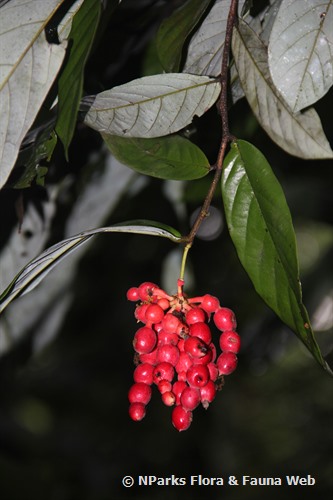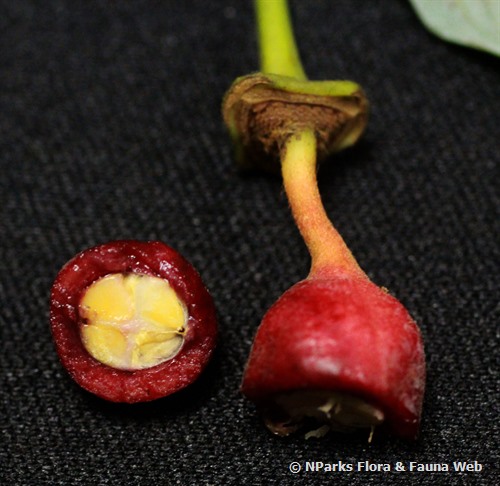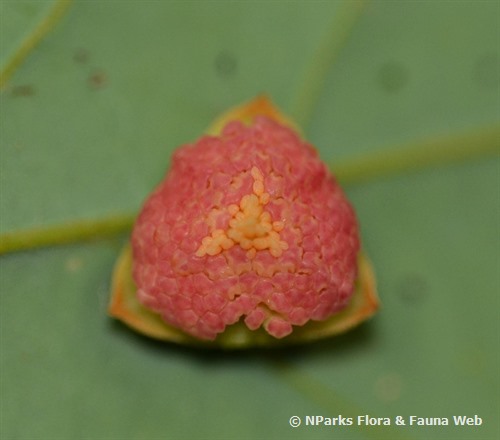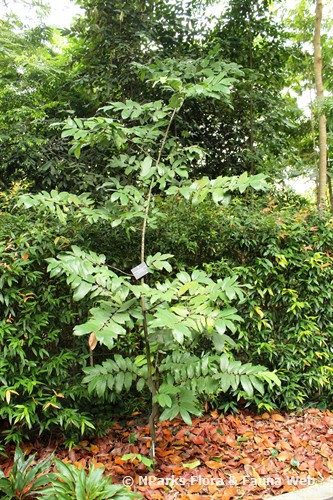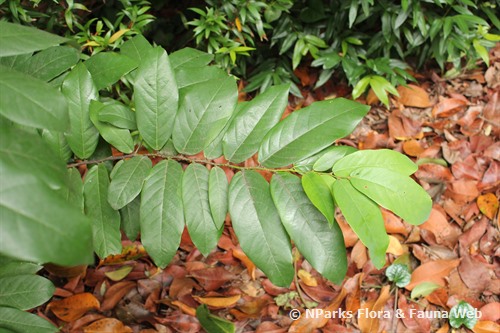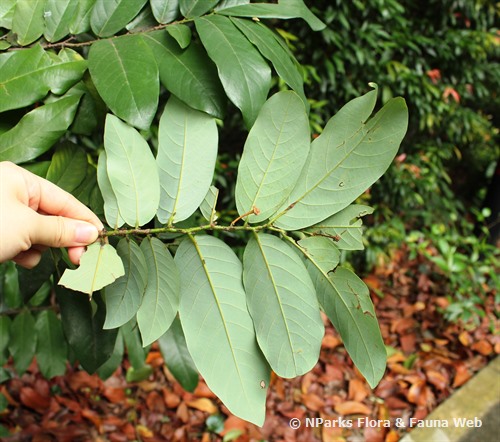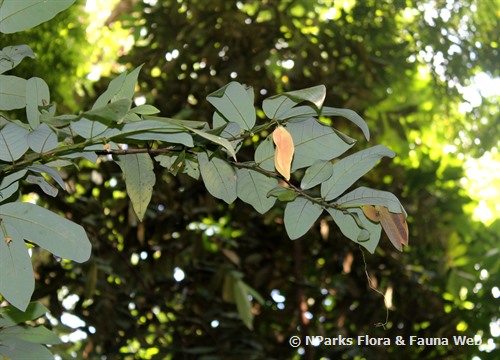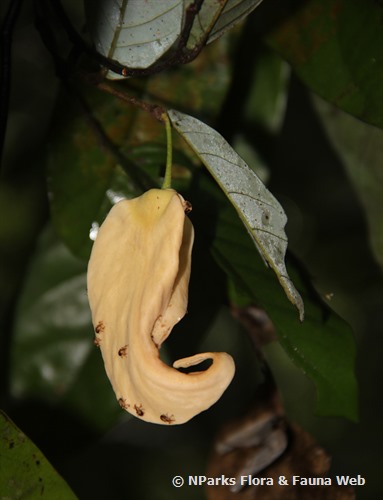
Back
Dasymaschalon dasymaschalum I.M.Turner
| Family Name: | Annonaceae |
| Synonyms: | Dasymaschalon blumei |
| Common Name: | Akar Mempisang |
Name
Classifications and Characteristics
| Plant Division | Angiosperms (Flowering Seed Plants) (Dicotyledon) |
|---|---|
| Plant Growth Form | Tree (Small (6m-15m)) |
| Lifespan (in Singapore) | Perennial |
| Mode of Nutrition | Autotrophic |
Biogeography
| Native Distribution | Myanmar to Java, Borneo |
|---|---|
| Native Habitat | Terrestrial |
| Preferred Climate Zone | Tropical |
| Local Conservation Status | Native to Singapore (Endangered (EN)) |
Description and Ethnobotany
| Growth Form | A shrub or a small tree grows up to 15 m tall. |
|---|---|
| Foliage | The alternate leaves are elliptic to oblong. Upperside of the leaf (adaxial surface) is dark-green and smooth, while underside (abaxial surface) is greyish-green. |
| Stems | The shrub or the tree sometimes develops climbing branches. |
| Flowers | The bisexual flowers are fragrant and pale yellow. Flower petals are united and twisted. |
| Fruit | Fruits are bright red, hanging downwards, resembling a string of beads (moniliform). |
Landscaping Features
| Desirable Plant Features | Ornamental Flowers, Ornamental Fruits, Ornamental Form |
|---|---|
| Landscape Uses | General, Parks & Gardens |
| Thematic Landscaping | Fragrant / Aromatherapy Garden |
Plant Care and Propagation
| Light Preference | Full Sun |
|---|---|
| Water Preference | Moderate Water |
| Plant Growth Rate | Moderate |
| Rootzone Tolerance | Moist Soils, Well-Drained Soils, Fertile Loamy Soils |
| Propagation Method | Seed |
Foliar
| Foliage Retention | Evergreen |
|---|---|
| Mature Foliage Colour(s) | Green |
| Foliar Type | Simple / Unifoliate |
| Foliar Arrangement Along Stem | Alternate |
Floral (Angiosperm)
| Flower Colour(s) | Cream / Off-White, Yellow / Golden |
|---|---|
| Flower Grouping | Solitary |
Fruit, Seed and Spore
| Mature Fruit Colour(s) | Red |
|---|
Image Repository
Others
| Master ID | 32858 |
|---|---|
| Species ID | 7272 |
| Flora Disclaimer | The information in this website has been compiled from reliable sources, such as reference works on medicinal plants. It is not a substitute for medical advice or treatment and NParks does not purport to provide any medical advice. Readers should always consult his/her physician before using or consuming a plant for medicinal purposes. |

